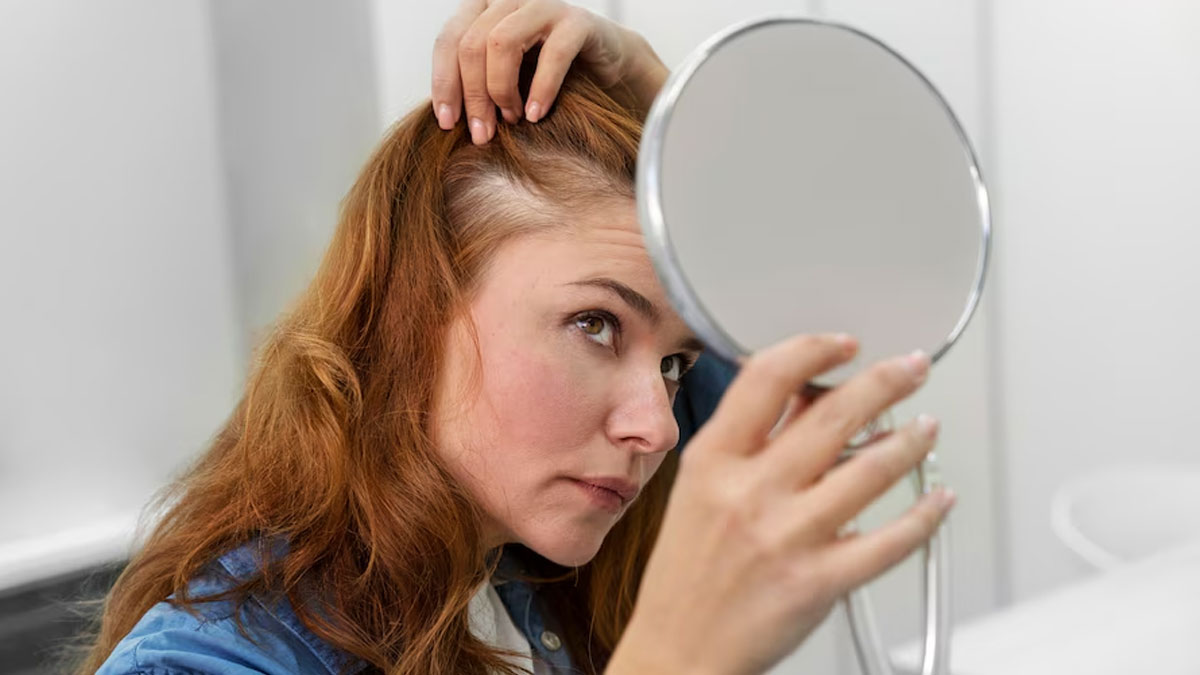
Skin cancer is one of the most common types of cancer. Melanoma, the most serious form of skin cancer, saw roughly 3.3 lakh new cases globally in 2022, with nearly 60,000 deaths, according to the International Agency for Research on Cancer (IARC) report. The primary cause of skin cancer is either prolonged exposure to the sun or unnatural sources, such as sunbeds. In both cases, the risk is high, and therefore, it is important to take the necessary precautions.
Table of Content:-
Generally, when we think of skin cancer symptoms, we imagine a new mole or a spot on the body. For instance, your back, shoulders, or even your face. But have you ever wondered whether or not you can develop symptoms on your scalp? If that's the case, you’re not alone.
In an interaction with the OnlyMyHealth team, Dr Shireen Furtado, Senior Consultant - Medical and Cosmetic Dermatology, Aster CMI Hospital, Bengaluru, sheds light on the same.
Also Read: Explainer: Can Sunscreen Protect Against Skin Cancer?
Classic Signs Of Skin Cancer

While skin cancer can show no symptoms in its early stages, when they do appear, it can appear as an unusual mole, which, according to Dr Furtado, is a key warning sign.
She says, "Look for moles that grow asymmetrical in shape, have irregular borders, and have colour variations, from brown, black, red, to white, or grow larger than usual mole size."
She adds, "A persistent ulcer or crusty patch that bleeds occasionally could also be a sign of basal cell carcinoma," which spreads very slowly and very rarely and will metastasize.
Moreover, watch out for scaly or rough patches that may appear reddish or brownish.
Can Skin Cancer Symptoms Occur On Scalp?

Addressing the elephant in the room, Dr Furtado says, “Skin cancer can develop on the scalp.” And since hair can hide it, it is important to keep a check on the scalp regularly for suspicious changes, she advises.
It is believed that basal cell carcinoma, which is the most common type of skin cancer, occurs more on the head and neck than any other part of the body. In fact, a 2018 review published in the Journal der Deutschen Dermatologischen Gesellschaft suggests that up to 2–28% of all basal cell carcinomas occur on the scalp.
Therefore, dermatologists recommend monitoring the changes, if any, while visiting the hair stylist or barber. She further advises looking for unusual lumps, sores in the scalp, scaly patches, or changing moles, as early detection plays a key role in treatment and recovery.
How To Diagnose Skin Cancer?
Diagnosing skin cancer isn’t an easy job. It starts with awareness and recognising the signs and symptoms. Moreover, a complete diagnosis often involves a combination of techniques, says Dr Furtado. This includes using a dermatoscope, a magnifying tool with built-in light.
She says, “An advanced dermatoscope can even capture high-resolution images for further analysis and comparison over time. However, the gold standard for diagnosis remains a skin biopsy. In this procedure, a small sample of tissue is extracted and examined by a pathologist under a microscope. This allows for definitive confirmation of whether cancerous cells are present.”
“Depending on the suspected type of skin cancer, additional tests like a sentinel lymph node biopsy might be needed to assess if the cancer has spread beyond the initial location. If you have a suspicious spot, a dermatologist can determine the best course of action through a comprehensive examination and potentially a biopsy,” the doctor adds.
On Reducing Risk

According to Dr Furtado, excessive sun exposure, lighter skin tones (as they tend to burn easily and have higher risks), a history of severe sunburns, a family history of cancer, and having multiple moles are the most common risk factors.
However, there are ways to reduce one’s risk of skin cancer. These include:
- Avoiding the sun's harmful rays
- Avoid outdoor activities during the peak hours, especially from noon to 4 p.m.
- Wearing hats or scarves and wearing long sleeves while stepping out.
- Putting on UVA/UVB-blocking sunglasses and applying sunscreen with SPF 30 or higher to the skin.
- Reapplying sunscreen every two hours, or more often if sweating or swimming.
- Avoid tanning beds altogether, as their artificial UV rays are just as damaging as sunlight.
- Becoming familiar with your skin through regular self-checks from head to toe, including your scalp, ears, and feet.
Conclusion
Skin cancer can occur in any part of the body, including your scalp. And because your scalp is always covered with so much hair, the cancer can be difficult to spot. Therefore, in addition to keeping an eye out for skin cancer symptoms on your body, it is also important to look for signs on your head too. Schedule an appointment with a dermatologist and consult them for any screening necessary to detect the disease on time.
Also watch this video
Read Next
Donna Lewis Opens Up About Her Battle With Breast Cancer; All About HER2 Positive Breast Cancer
How we keep this article up to date:
We work with experts and keep a close eye on the latest in health and wellness. Whenever there is a new research or helpful information, we update our articles with accurate and useful advice.
Current Version